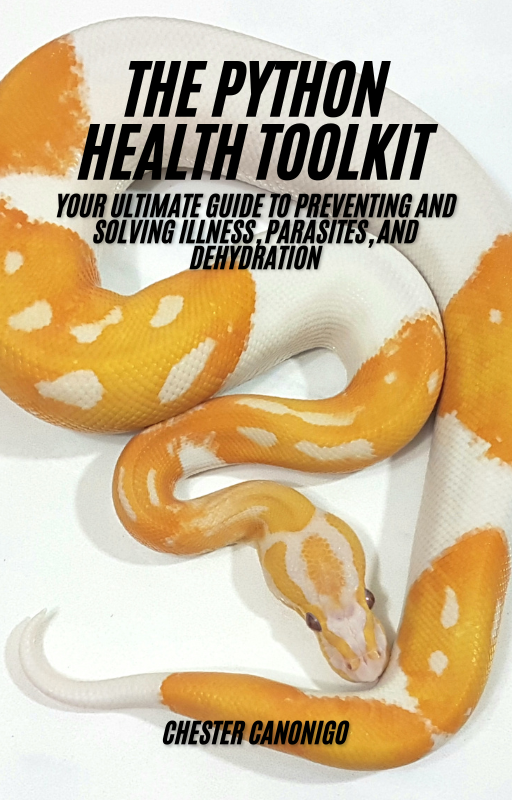

If you’re like me, taking care of ball pythons as pets is more appealing than say the regular cat or dog.
What can I say? Ball pythons make great pets.
Whether you’re just someone who’s starting as a hobbyist or an expert reptile enthusiast, you’ll find ball pythons to be extremely great pets to care for despite not being as popular a pet choice as a cat or a dog.
Here are some reasons why you’d want to learn more about taking care of ball pythons as pets:
Generally Docile and Non-Aggressive
Unlike snakes that bite when they feel threatened, ball pythons curl into a ball. This makes taking care of ball pythons as pets ideal for beginners and experts alike. These snakes also seem to become tamer with regular handling.
Still, that doesn’t mean it’s 100% safe to leave them alone with young children and smaller pets. Keep everyone safe by making sure you keep a watchful eye.
Manageable Size and Long Lifespans
I once had a 12-foot reticulated python that I grew to 16 feet within a year which was extremely hard to handle. Had I known the dangers of handling such an enormous snake as an amateur reptile enthusiast, I would probably not have kept it.
Ball pythons on the other hand typically reach 3 to 5 feet in length as adults. This is very manageable even for amateur reptile enthusiasts to handle alone (Note: I would still recommend that you have someone else in the room with you when taking care of ball pythons as pets.)
Ball pythons also live as long as 20 to 30 years making them excellent companion animals.
Fairly Easy to Feed
Ball pythons, depending on their age, size, and metabolism, eat mice or rats every 7 to 14 days. They also get used to frozen-thawed prey.
Frozen-thawed prey is highly recommended over live feeding to avoid injuring your snake during feeding time as well as reduce the chance of parasite or disease transmission. Just dangle an appropriately-sized food item in front of them with tongs and give it a slight quiver.
This activates their predator instincts and with a lunge or two, they’ll easily have the food in their jaws. Give it a slight tug to simulate struggle and your ball python will devour the food as quickly as if it were a live prey.
You will have to learn how to hold tongs properly though and how to keep your hands safe from accidental bites. In time you’ll learn how much distance you’ll need to remain safe and just how subtle a quiver to give so your ball python is stimulated enough to strike at its “prey”
It is also extremely important to wash your hands before and after handling their food. Many bites have occurred to beginners and experts alike because their ball pythons mistook their owner’s hand for food. If that happens, you have only yourself to blame.
Very Simple Basic Housing Needs
Ball pythons thrive well in a properly sized enclosure where they have enough room to move around, explore, and thermoregulate.
A 20-gallon tank is suitable for juvenile ball pythons, while 40-gallon (or larger) breeder tanks are enough for adults. Try to maintain a temperature gradient of 26-33°C (80-90°F) on the warm side, and 24-26°C (75-80°F) on the cool side. The middle area can fluctuate as needed.
This is important so that they can move around to where they feel comfortable within the enclosure.
It is also important to keep the humidity levels at 50-60% within the enclosure to support your snake’s health and well-being. Keep a small tub of fresh water that they can soak in or drink from and change it regularly.
You can keep the enclosure as bare as you want or provide environmental enrichment in the form of hiding places, climbing structures, and sensory stimuli, to promote mental stimulation, natural behaviors, and overall well-being.
Perhaps one of the biggest time investments you’ll have to make is cleaning its enclosure regularly. Snakes can get their enclosures filthy really fast and if you don’t clean it, you could face costly bacterial infections to your pet. Never mind the fact that it can really stink up a room.
(I know, I kept a 16-foot reticulated python in my room once and forgot to clean its enclosure by a day because I had a gig.)
Legal Considerations and Documentation in the Philippines
Although obtaining a ball python in the Philippines was nearly impossible three decades ago, it is now fairly easy to buy one today. To make sure that you are getting a fully documented animal, make sure you buy one from a registered breeder.
This also ensures that you are getting a healthy, captive-bred animal that is already genetically conditioned to be tamer than specimens caught from the wild.
Nevertheless, make sure you familiarize yourself with any local laws or regulations governing the ownership of ball pythons as pets, including permits, restrictions, or prohibitions.
Lots of Educational Resources Available
Unlike three decades ago, there are also more educational resources available for research and learning when it comes to ball pythons. There’s the Internet for one and lots of books and magazines that are available for download or purchase.
If you just put in enough time and effort, you can find whatever you need to learn about taking care of ball pythons as pets. Contact us for more information.
Taking Care of Ball Pythons as Pets Can be a Fun Networking Opportunity
Another fun way to gain more knowledge about this unconventional pet is to join reptile communities. I’m sure there’s one near you if you just look hard enough. This is a great way to network with other like-minded individuals.
Heck who knows, maybe you could pool your resources together and create a convention or simply create a large enough group to order food and other items for your reptiles in bulk for a larger discount than as an individual buyer.
Minimal Veterinary Care Needed
You’ll need to schedule regular veterinary check-ups with a reptile veterinarian experienced in treating ball pythons to monitor your snake’s health and address any concerns or issues promptly.
You should also consider routine parasite screening to detect and treat internal parasites, such as mites or worms, which can affect your snake’s health.
Other than that, there’s very little veterinary care you need for your ball python. As long as you provide its basic needs, food, and vitamins, and reduce external stress factors, your ball python should be fine. Overall, ball pythons can make wonderful and rewarding pets for responsible and committed owners. With proper care, attention, and a suitable environment, you can enjoy many years of companionship with these fascinating reptiles.
Learn More About Ball Python Care with the Python Health Toolkit! Get Your Copy for Only $20 Through Gumroad
“The Python Health Toolkit: Your Ultimate Guide to Preventing and Solving Illness, Parasites, and Dehydration” isn’t just another pet care guide.
It’s your comprehensive, hands-on manual for ensuring that your ball python thrives—not just survives.
Whether you’re a seasoned snake enthusiast or a new pet parent, this guide is designed to provide you with practical solutions for the most pressing health challenges ball python owners face: Illness, Parasites, and Dehydration.
These are the challenges that make you wonder, “Am I doing everything I can for my snake?”




3 thoughts on “Taking Care of Ball Pythons as Pets? Here’s What You Need to Know.”